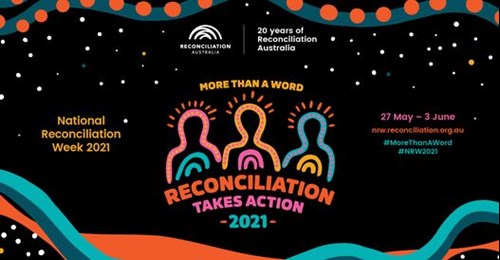
NSW State Emergency Service (NSW SES) is recognising National Reconciliation Week this year by reflecting on the contribution Aboriginal and Torres Strait Islander people make to keeping local communities safe.
Running each year from 27 May to 3 June, National Reconciliation Week is a time for all Australians to work towards a more unified country, where the voice of the nation's first people is heard. It is also a time for everyone to learn about the shared histories, cultures and achievements Australians have with Aboriginal and Torres Strait Islanders.
NSW SES and its more than 10,000 respect and value traditional owners of the land on which it works and welcomes the contributions of Aboriginal and Torres Strait Islander people have to keeping communities safe from storms and floods.
Meet NSW SES volunteer Tim Miller a member of the Port Stephens Unit and a local business owner. For the last 40 years Tim has donned his orange uniform and helped respond to floods and storms across the State. More importantly, he is a proud Wanaruah man, where his people come from the Hunter Valley area down to the western side of Raymond terrace.
"As a Wanaruah man I felt a deep connection to the land on which I live," Tim says.
"I am also on the board of the New South Wales Local Aboriginal Land Council in Muswellbrook, which keeps me connected with my community. "
Tim's connection to his people and the land has seen him achieve a great deal in healing the past and effecting significant change.
"In 2019, the Wanaruah Local Aboriginal Land Council facilitated the repatriation of nine sets of Aboriginal remains that had been in museums in Sydney and Scotland," he recalls.
"I was humbled to have been the MC for the ceremony where these Aboriginal remains were reburied, returning to the land once again," he says.
Reconciliation Australia's theme for 2021, More than a word. Reconciliation takes action, urges the reconciliation movement towards braver and more impactful action.
"Aboriginal people were the custodians of the land we stand on today and as we build SES Unit headquarters on this land, I see it only fitting that we acknowledge and show respect to past and present elders of our local communities," Tim says.
"It would be great if we could place local aboriginal art works in local Unit buildings to acknowledge the Aboriginal history that is particular to that local community.
"The NSW SES could involve local Aboriginal Elders from within their community and/or Local Aboriginal Land Councils to share their stories and experiences of past flooding and storm incidents," he says.
"In Aboriginal culture, you have Elders and Knowledge-holders - they don't have pieces of paper to indicate their knowledge - they carry knowledge of Country handing it down from generation to generation.
"We need to respect that knowledge, be open and willing to learn - ask Elders and Knowledge-holders about how to engage respectfully with their communities.
"We need to value that kind of knowledge."
Tim explains that he first joined NSW SES when he was just 17 years old.
"I first joined the NSW SES Maitland Unit in 1982 and since then I have seen the service grow and evolve," he recalls.
"In 1998, I moved to the Port Stephens Unit where I became a Road Crash Rescue Instructor.
"I've met the most exceptional people through my time volunteering with the SES and it has been a thrill to be a part of the NSW SES family for so long," he says.






